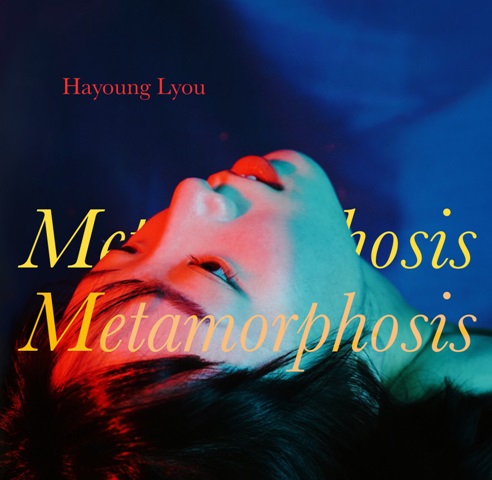
ADÈS: Piano Concerto.* Totentanz+ / *Kirill Gerstein, pno; +Christianne Stotijn, mezzo; +Mark Stone, bar; Boston Symphony Orch.; Thomas Adès, cond / Deutsche Grammophon 0028948379996
I like some of the music of Thomas Adès without really loving it. Once the enfant terrible of classical music, back in the days when his pieces were issued on the EMI label when it was still really EMI, he pretty much invented the New School of Modern Music Writing in which one begins most pieces with an extraordinary noise, be it a bang, a scream, someone playing a violin with a chainsaw or a pistol shot, before moving on to edgy, metallic-sounding figures that were then developed a bit. It was extremely novel in its day but, as I say, it seems to have now become a template for most modern composers, the reason being is that it was successful for Adès and put him on the map.
Here we are now, almost two decades on, and Adès is still writing music. The interesting thing about these two compositions is that they show that he has grown as a composer. He no longer slams the listener upside the head with metallic sounds or screeches at the beginning of his works, and although they have a lively rhythm he seems to take more care with creating themes and really developing them well. This album is, as you can see, being released by Deutsche Grammophon, a name that once signified a prestigious and long-standing classical record label but which now represents some faceless, soulless corporation that only provides hard copies of its progeny for review to Major Magazines, of which I believe there are only four in the entire world, Gramophone, BBC Music, Fanfare and American Record Guide, and the latter two are on their last legs.
Thus I had to review this jolly little record from streaming audio on the Naxos Music Library, which provided no more than the cover art and the names of the performers. Without liner notes, I haven’t a clue as to when Adès wrote these pieces, when their premieres were, or who these soloists were. Thankfully, I do know who and what the Boston Symphony Orchestra is, although that, too, is now a soulless corporation and not the good old Boston Symphony of the Koussevitzky-Munch-Leinsdorf-Ozawa days.
Just as Adès composition style has changed, so too has the sound of the Boston Symphony. Once noted throughout the world for its plush, well-manicured sound, it has become a generic-sounding orchestra. Yes, it is still a very fine orchestra, but so are orchestras from such unexpected locales as Usbeckistan, Lapland and Outer Mongolia. Times have changed for the symphony orchestra business as well as for the record business.
As for the music, it still has its shock moments here and there—note in the third movement of the piano concerto—but as I say, it is music that is better planned and well bound. The downside is that without his trademark sound, Adès is now just another modern composer trying to make a buck in a classical world that generally keeps modern composers at arm’s length. Yet I did indeed like what I heard here. In that same third movement of the piano concerto, for instance, I detected some moments that I felt were a bit tongue-in-cheek. Well, I hope he meant them to be tongue-in-cheek. One never knows, do one?
Now that he has become just another modern composer plying his trade among others, Adès has ironically become more mainstream. The Piano Concerto is a good, solid piece, but oddly it reminded me more of music from the past, particularly the 1950s when such composers as William Schuman were plying their trade. I think this is a fair comparison. If you liked the music of Schuman and Walter Piston, you will surely enjoy this concerto. I place it as a “mainstream modern work” that should, and probably will, be programmed by some orchestras around the globe.
As for Totentanz, this is closer in style to the earlier Adès as well as the Adès who wrote The Tempest which was performed at the Metropolitan Opera several years ago. The problems with The Tempest were two, however. One was that Shakespeare’s story was used merely as a starting point for some utter nonsense that became the plot. The other was that the music was not only next to impossible to sing, particularly the soprano role of Ariel, but that it emerged as sort of jumbled in places. In Totentanz, a much shorter work (it only lasts about 34 minutes), Adès is able to write music that is, to my ears, more coherent. Totentanz was written in 2013 to a commission by Robin Boyle to honor the memory of Witold Lutosławski and his wife. According to Wikipedia (remember, I have no liner notes to go by), Totentanz “is set to an anonymously authored text that appeared under a 15th-century frieze in St. Mary’s Church, Lübeck, that was destroyed by a British air raid in World War II. In the score program notes, Adès wrote, ‘the frieze depicted members of every category of human society in strictly descending order of status, from the Pope to a baby. In-between each human figure is an image of Death, dancing and inviting the humans to join him. In this setting, each of the humans in turn is represented by a low soprano, and Death by a baritone.’”
Totentanz is a very interesting piece. Since it is harmonically more daring than the Piano Concerto, it will surely receive less performances, but in a way its music is not only more like the old Adès but considerably more imaginative than usual for him. The problem here is that both singers have wobbles and that mezzo-soprano Christianne Stotijn also possesses an extremely ugly voice. Unfortunately, this seems to be the only commercial recording of it. There is a live performance of the premiere on YouTube with the same mezzo but Simon Keenlyside as the baritone. Keenlyside has a much more attractive voice, but is too weak in his lower register for the music, so I suppose you can have your cake but not eat it. Stotijn’s voice is clearly indigestible in both performances.
Adès’ conducting is genial and even a bit lyrical in the Piano Concerto, powerful and dramatic in Totentanz. It’s really a shame that the singers suck because otherwise I would easily give this entire venture a better recommendation. Alas, to use a favorite phrase of the Millennials, It is what it is. You pays your money and you takes your chances. The sound quality is excellent but not nearly that of old DGG sound, but then again…
—© 2020 Lynn René Bayley
Follow me on Twitter (@Artmusiclounge) or Facebook (as Monique Musique)



 During the sojourn in Leipzig, a friend of Ethel’s went on a trip to Vienna and brought back a dog named Marco. Marco was…unique. According to Ethel, he was “half St. Bernard, and the rest what you please,” and “a huge sprawling yellow-and-white puppy of the long-haired kind generally seen dragging washerwomen’s carts.” Unfortunately, her friend already had four sporting dogs, and Marco had a tough time fitting in with the pre-existing pack. Ethel fell in love and begged to take him. And so began Ethel and Marco’s happy life together!
During the sojourn in Leipzig, a friend of Ethel’s went on a trip to Vienna and brought back a dog named Marco. Marco was…unique. According to Ethel, he was “half St. Bernard, and the rest what you please,” and “a huge sprawling yellow-and-white puppy of the long-haired kind generally seen dragging washerwomen’s carts.” Unfortunately, her friend already had four sporting dogs, and Marco had a tough time fitting in with the pre-existing pack. Ethel fell in love and begged to take him. And so began Ethel and Marco’s happy life together!




 NEW SHOES: “KIND OF BLUE AT 60” / SCHAPIRO: Boiled Funk.+ Boiled Funk 2: Dark of Night.+ Boiled Funk 3: Worth Your While.* Boiled Funk 4: Old Feet, New Shoes.* Boiled Funk 5: A Smile.* Boiled Funk/Theme.* PIKET: Foiled Bunk.+ DAVIS: So What.+ Blue in Green.* All Blues.* Flamenco Sketches.*Freddie Freeloader* / Schapiro 17: Bryan Davis, Andy Gravish, Eddie Allen, Noyes Bartholomew, tpt; Deborah Weisz, Alex Jeun, Nick Grinder, tb; Walter Harris, bs-tb; +Rob Wilkerson, *Ben Kono, Candace DeBartolo, a-sax; Paul Carlon, Rob Middleton, t-sax; Matt Hong, bar-sax; Roberta Piket, pno; Sebastian Noelle, gtr; Evan Gregor, bs; Jon Wikan, dm; Jon Schapiro, arr/cond / Summit Records DCD 756
NEW SHOES: “KIND OF BLUE AT 60” / SCHAPIRO: Boiled Funk.+ Boiled Funk 2: Dark of Night.+ Boiled Funk 3: Worth Your While.* Boiled Funk 4: Old Feet, New Shoes.* Boiled Funk 5: A Smile.* Boiled Funk/Theme.* PIKET: Foiled Bunk.+ DAVIS: So What.+ Blue in Green.* All Blues.* Flamenco Sketches.*Freddie Freeloader* / Schapiro 17: Bryan Davis, Andy Gravish, Eddie Allen, Noyes Bartholomew, tpt; Deborah Weisz, Alex Jeun, Nick Grinder, tb; Walter Harris, bs-tb; +Rob Wilkerson, *Ben Kono, Candace DeBartolo, a-sax; Paul Carlon, Rob Middleton, t-sax; Matt Hong, bar-sax; Roberta Piket, pno; Sebastian Noelle, gtr; Evan Gregor, bs; Jon Wikan, dm; Jon Schapiro, arr/cond / Summit Records DCD 756

